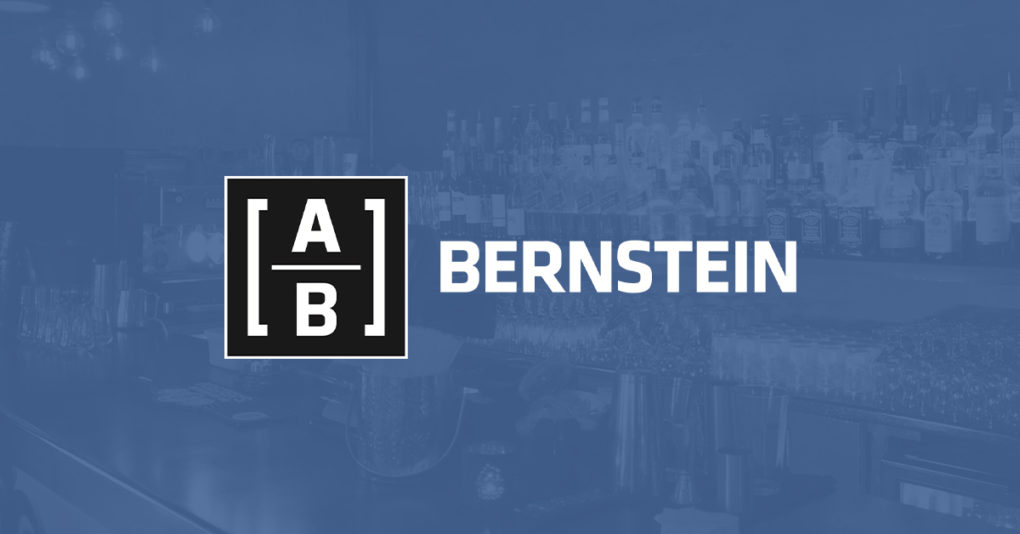
U.S. per capita alcohol volumes fell -4.5% in 2023, according to last week’s report, citing shipment data. However, with all categories experiencing destocking, shipments underestimate how much consumers purchased and drank last year, putting the decline in liters of pure alcohol (LPA) down -3% year-over-year (YoY). Weighing each category by their ABV, the report estimates that beer volumes declined -5.5%, and total spirits LPA were down -2.8%, a weaker-than-usual performance for spirits but still outgrowing the other categories and stealing share largely at the expense of beer.
The report dives into how much of that decline can be blamed on temporary headwinds or long term threats to the industry.
The ‘Mother of All Hangovers’
What others have referred to as a normalization post the pandemic’s bev-alc growth spike, Bernstein’s analysts put it simply: “The industry had the mother of all parties during COVID and is now suffering the mother of all hangovers.” The figures from last year followed extraordinary +6.2% and +5.4% growth in 2020 and 2021, respectively (for comparison, between 2018 and 2023 U.S. spirits LPA grew +2.5%).
Price elasticities finally biting in 2022 may also be a factor. Beer consumers saw prices go up by the end of 2022 and start of 2023. However, spirits had a solid price mix of about +3%, higher than the historical average for the category, but nowhere near the magnitude seen in beer or in general inflation.
Still, the cumulative impacts of price increases over the last few years is being felt in consumers’ baskets. While unemployment remains low and inflation is coming down, consumer sentiment is leading to bifurcated buying behaviors, with some still purchasing super premium products, while others are modifying volumes to tighten the belt.
The majority of the 2023 correction can be explained by temporary headwinds, analysts wrote. But given the downturn, potential long-term headwinds have been making headlines.
Are Cannabis, Ozempic or Moderation Permanent Headwinds?
The report emphasized that many of the potential long-term headwinds for bev-alc are not unique to 2023, and structural shifts are slow and rarely happen overnight.
One of those threats given much attention is Ozempic and GLP-1s diabetes/diet drugs, but it’s still early days to understand the impact of GLP-1 on alcohol consumption, despite doses rising steadily 2023. With capacity constraints and users representing a relatively small proportion of the U.S. population, the report’s worst case estimate comes to a -2% reduction in per capita alcohol consumption by 2030.
As for another legal drug, the report refers to Canada as a case study for understanding the potential of cannabis to cannibalize alcohol sales, particularly beer. The country legalized cannabis in 2018, and beer’s decline accelerated. Legal recreational cannabis now accounts for 0.4% of Canadian household expenditure, while alcohol represents 1.7% (-0.2 percentage points from pre-COVID).
In the U.S., half of Americans now live in a state where recreational cannabis is legal. In 2022, the legal cannabis market generated $30 billion in sales, making it already half the size of the U.S. wine market, 26% the size of the beer market and 13% the size of the total alcohol market.
“It is indeed possible that the rise of legal cannabis in the U.S. is cannibalizing alcohol sales, but especially beer,” analysts wrote.
Growing cannabis consumption is tied to another hot topic in alcohol: Younger consumers’ alcohol patterns could be related to growing cannabis consumption. Overall, the report referred to Gallup findings that the proportion of drinkers below 34 years has decreased. However, a University of Michigan “Monitoring The Future” study found that while the prevalence of alcohol consumption for those below 20 years old continues to steadily fall, the prevalence for 21- to 30-year-olds has held broadly steady.
Where To From Here?
The report outlines three potential paths for the future of the industry. One is that consumption rises to pre-COVID levels and stabilizes. The second takes a more cautious view on temporary headwinds with some reversing or staying in the short term, and expects consumption to remain flat. The third is that the declines are permanent trends and continue every year.
The latter would imply that permanent headwinds are in full force every year, meaning that by 2028 the average American is consuming 8% less alcohol than they did in 2019. In other words, Americans would revert to drinking to a level that has not been seen since 1960. That theory would also bet on spirits volume growth coming to an end.
“If one believes that spirits continues to gain share from beer and ~0.6% tailwind from population growth, then the only way for that statement to hold true is for per capita alcohol growth to decline about -2% per year in perpetuity,” analysts wrote. “We believe this is extremely unlikely.”